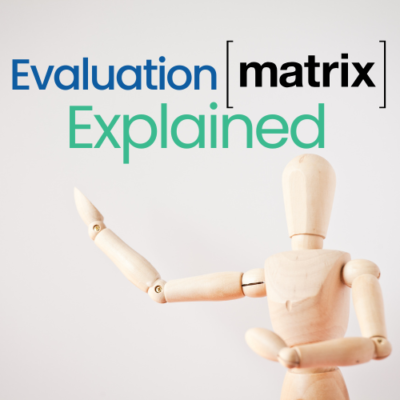Thematic Evaluation Explained
December 30, 2023 2023-12-30 6:00Thematic Evaluation Explained
Definition: Thematic evaluation is an approach that focuses on assessing specific significant themes, issues, or strategies across multiple projects, programs, or policies. It aims to understand how well certain thematic aspects are integrated and addressed within and across interventions and identify lessons learned and areas for improvement that are common across the evaluated cases.
Practical Example: Gender Mainstreaming in Health Programs
Context: An international health organization has implemented various programs across different countries aiming to integrate gender mainstreaming approaches. These programs range from maternal health initiatives to HIV prevention and treatment services. A thematic evaluation is commissioned to assess the effectiveness and degree of gender mainstreaming in these programs.
Application in M&E:
Baseline Data Collection: Before conducting the thematic evaluation, a review of existing reports, gender strategies, and data on program outcomes where gender was considered is undertaken to establish the current state of gender integration.
Designing the Evaluation: The evaluation framework is designed to focus specifically on gender issues. This includes the development of gender-sensitive indicators, methodologies for assessing gender integration, and identifying relevant stakeholders for participation.
Implementation: Methods such as document reviews, key informant interviews, focus groups, and case studies are undertaken across the various program sites to gather in-depth information regarding gender integration in health programs.
Monitoring: As the thematic evaluation progresses, ongoing documentation of observations, challenges, and good practices related to gender mainstreaming is conducted.
Post-Implementation Data Collection: Data is collected from the different programs on key gender-related outcomes, such as changes in male and female health-seeking behaviors, decision-making dynamics within households, and access to healthcare services.
Analysis: The information gathered is synthesized to understand the trends, patterns, and impacts of gender mainstreaming across programs. The evaluation investigates both the intended and unintended consequences of the gender-related initiatives.
Reporting and Learning: A comprehensive report is developed, providing an overview of how gender was integrated into the programs, the effectiveness of these initiatives, and strategic recommendations for enhancing gender mainstreaming in future health interventions.
Decision Making: The results of the thematic evaluation inform organizational decisions on revising gender strategies, designing new programs, and developing training for staff to improve gender responsiveness.
Key Points in Application
- Issue-Focused: The evaluation is tailored to provide insights into a specific thematic area rather than general program effectiveness.
- Cross-Program Analysis: It allows for comparisons and learnings across different interventions, geographies, or time periods.
- Stakeholder Engagement: Engaging a range of stakeholders, especially from marginalized gender groups, is crucial for a holistic understanding of the issues.
Additional Elements in Thematic Evaluation:
- Cross-cutting Evaluations:
- Cross-cutting evaluations look at issues that intersect with multiple sectors or themes. This approach can be used in tandem with thematic evaluations to address the intersecting nature of issues like gender, environment, and poverty.
- Meta-Evaluation:
- A meta-evaluation is an assessment of a set of evaluations, used to aggregate findings or assess the quality and methods used. It can be used in thematic evaluations to provide an overarching review of all the evaluations conducted on a particular theme.
- Stakeholder Analysis:
- Stakeholder analysis involves identifying, understanding, and prioritizing stakeholders relevant to a particular issue or evaluation. This is key in thematic evaluation to ensure that the perspectives of all affected parties are considered.
- Quality Assurance:
- Methods to ensure the credibility and reliability of the evaluation findings. In thematic evaluations, quality assurance practices such as peer reviews and triangulation are important to validate the findings across different programs and contexts.
- Utilization of Findings:
- The strategies put in place to ensure that the findings of the evaluation are used effectively. Thematic evaluations should include a dissemination plan for sharing findings with relevant stakeholders to enhance the use of learned lessons.









